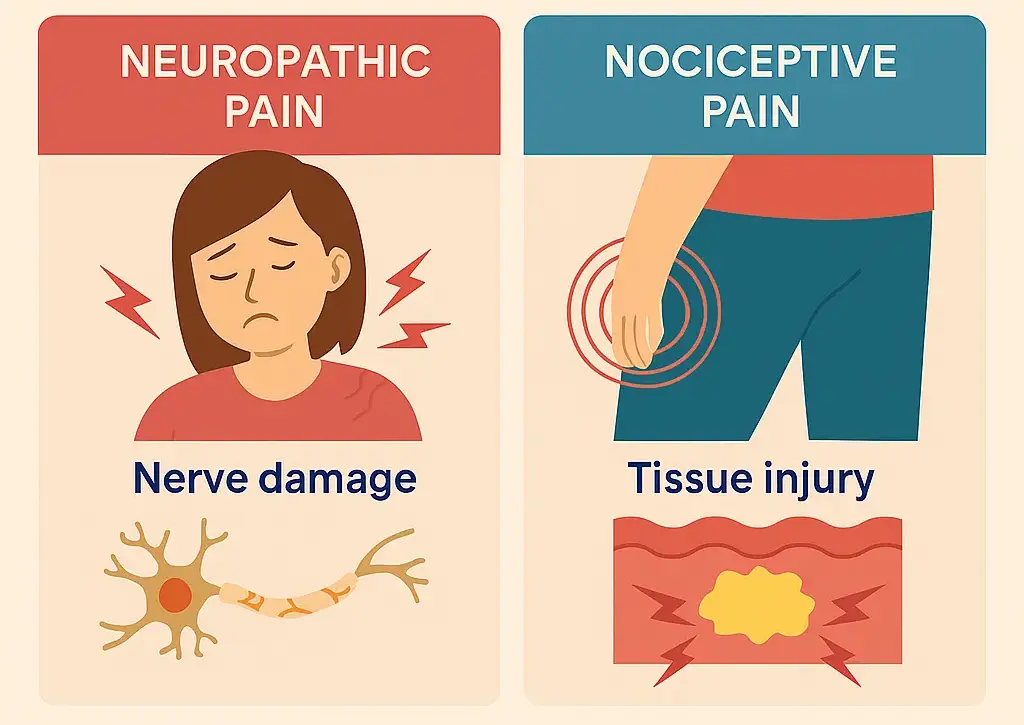Pain can be difficult to describe as it’s often a symptom associated with other medical conditions (pre-existent or new). For example, pain can be associated with pregnancy, endometriosis, uterine fibroids, infections, rheumatoid arthritis, anxiety, and more.
Pain typically falls into two categories:
- Nociceptive Pain: This occurs when pain receptors in the skin, bones, articulations, muscles, or organs are activated. This type of pain is often described as constant, deep, pressure-sensitive, worsens with movement, and is well-localized.
- Neuropathic Pain: This results from nerve damage, often due to infections (like herpes) or conditions (like diabetes), and can be more difficult to treat. This pain usually feels like burning, tingling, sharp stabbing, or electric shocks.

In both cases, pain can be either acute (short-term) or chronic (lasting more than 3 months). Treatment depends on the type, location, and associated medical conditions. For details on pain associated with a known condition, you can consult the related condition fact sheets. For information specifically on headaches and migraines, please read our fact sheet here.
During pregnancy, a lot of pregnant individual experience new types of pain due to the body’s changes. Other than contractions and labor pain, lower back pain and pelvic pain are common, affecting about half of pregnant individual. This type of pain can start as early as week 10.
Lower back pain and pelvic pain is often caused by hormonal changes, particularly the hormone relaxin, which increases during pregnancy to make ligaments more flexible in preparation for childbirth. As your pregnancy progresses, factors like weight gain, the shifting of your spine to accommodate your baby (lordosis), constipation and water retention can contribute to back pain. Water retention, especially in the third trimester, can also compress soft tissues like those in your wrists, leading to conditions like carpal tunnel syndrome.
Several factors can increase the risk of developing low back and pelvic pain during pregnancy. These include physical, personal, and environmental factors. For a detailed look at these factors, see the table 1 below. Understanding these risk factors can help prevent, manage, and potentially reduce the severity of pain.